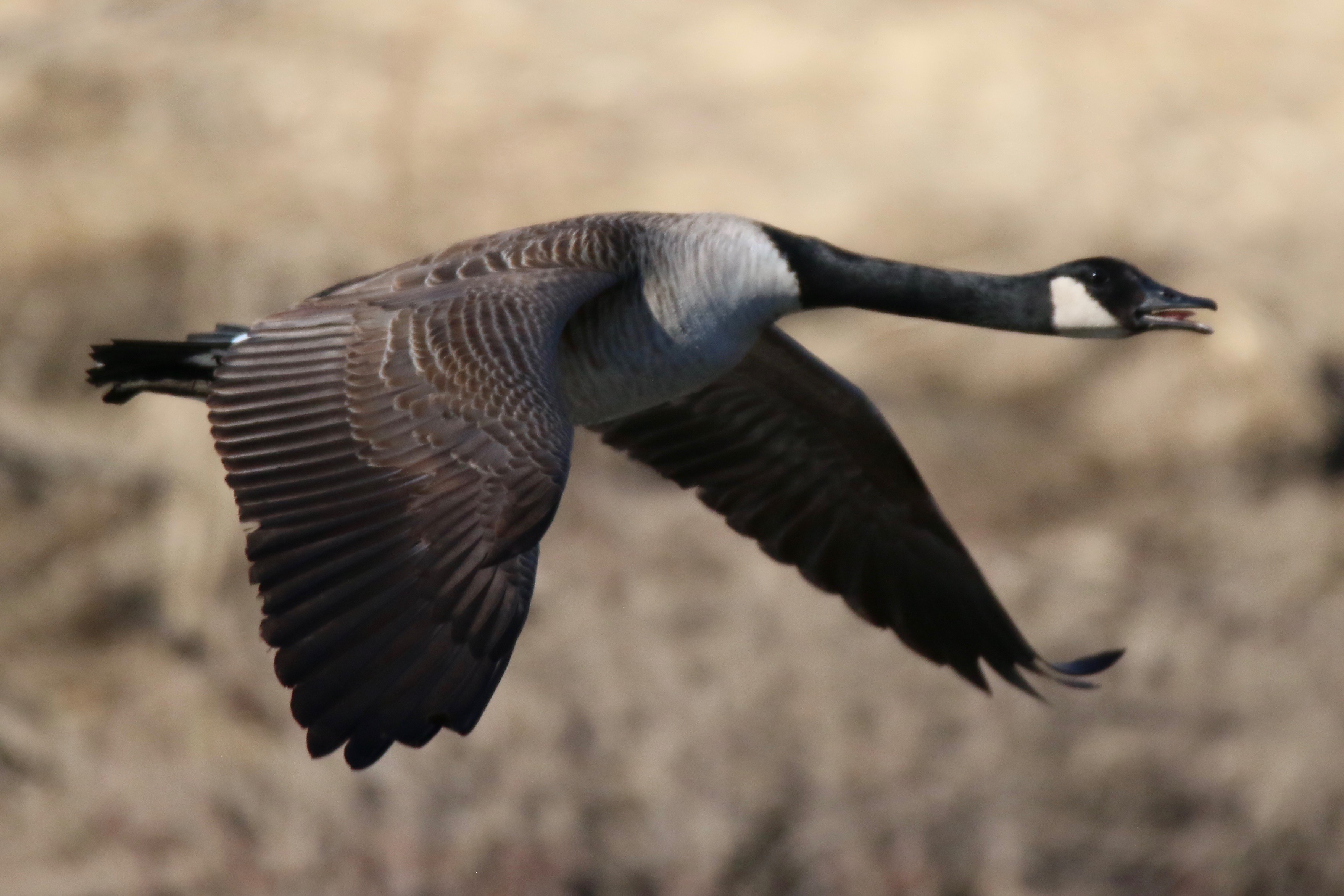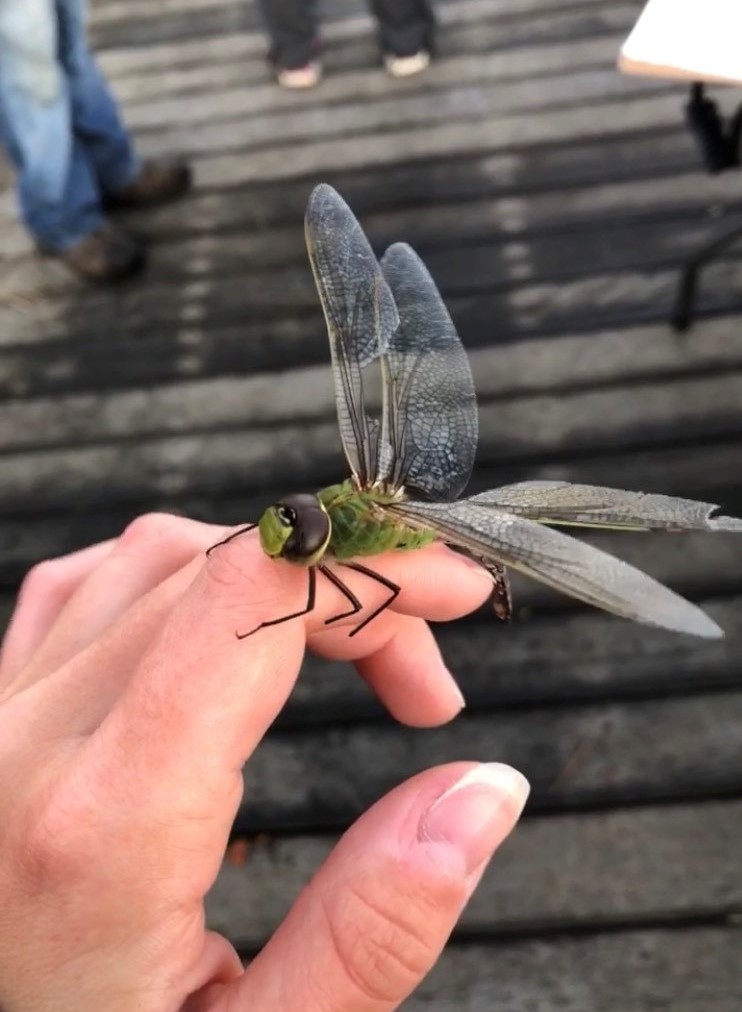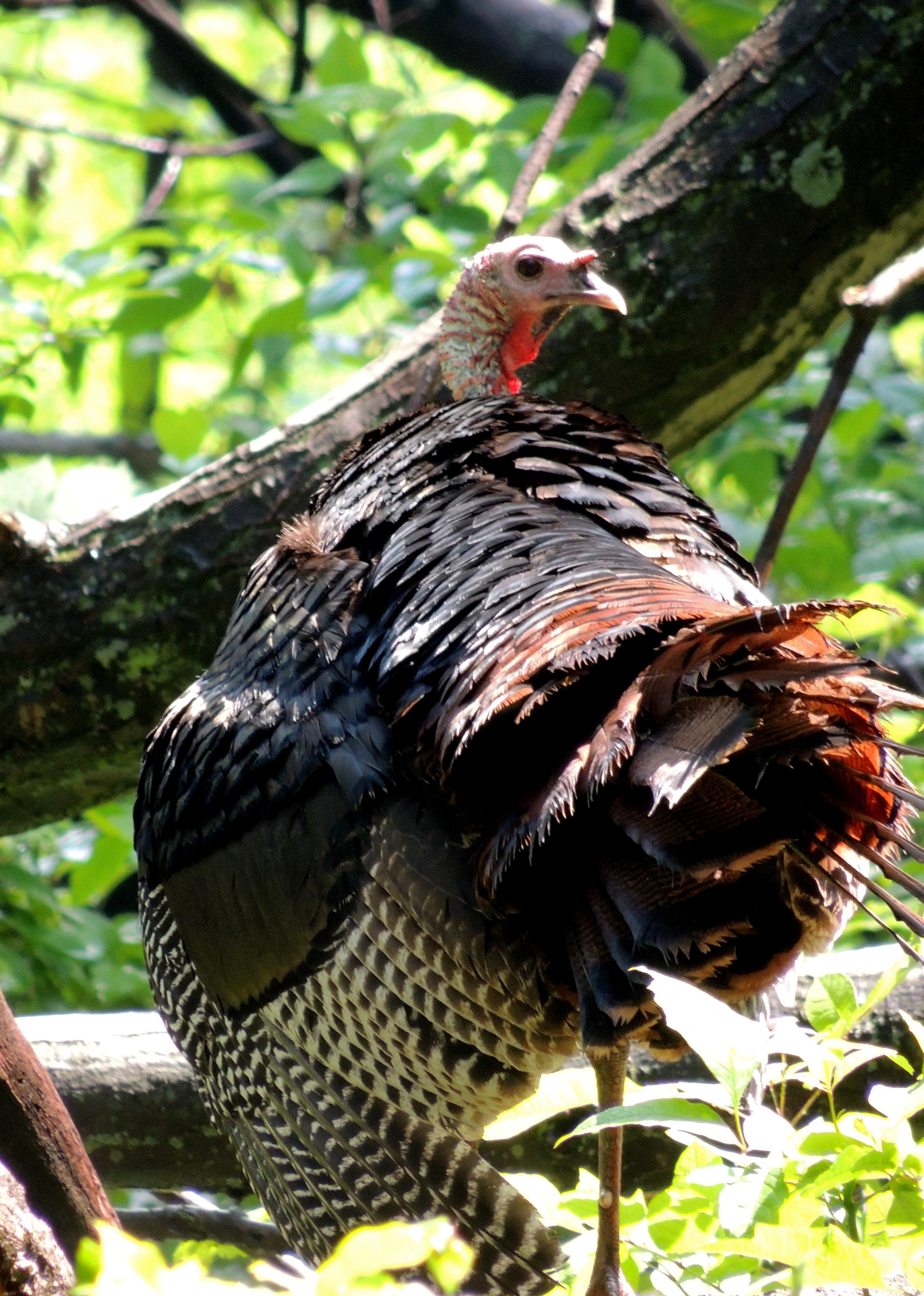Lastly, we had 139 people submit viable data and bumble bees and monarchs came out on top as the most frequently recorded species. Great job to everyone who participated in the Phenology Challenge this summer!
 The long, sunny days and hot nights we’re having may be the guise of an endless summer because signs of autumn are slowly but surely beginning to show. While shorter days, cooler temperatures and the changing colors of leaves often signal autumn for us here in Wisconsin, we also have wildlife that come with this seasonal change. Large flocks of Canada geese flying in a V formation heading south and monarch butterflies migrating to Mexico are often what we think of when we hear about fall migrations.
The long, sunny days and hot nights we’re having may be the guise of an endless summer because signs of autumn are slowly but surely beginning to show. While shorter days, cooler temperatures and the changing colors of leaves often signal autumn for us here in Wisconsin, we also have wildlife that come with this seasonal change. Large flocks of Canada geese flying in a V formation heading south and monarch butterflies migrating to Mexico are often what we think of when we hear about fall migrations.
 While those species are classic examples of fall migration, other lesser known species like the Common Green Darner dragonfly also migrate during September. Swarms of these dragonflies can sometimes be so intense that they show up on weather radar systems.
While those species are classic examples of fall migration, other lesser known species like the Common Green Darner dragonfly also migrate during September. Swarms of these dragonflies can sometimes be so intense that they show up on weather radar systems.
And to give our plant friends some love, the asters and the goldenrods cannot be forgotten as the most recognizable late season wildflowers here in Wisconsin. They also play a very important role as a food source for many late season pollinators.
Keep your eyes out for these species and many more during the months of September, October, and November – and help document them using iNaturalist!
 iNaturalist is a free (and fun!) platform where data is recorded and submitted for this challenge. To be included in our challenge, just make sure that you take a picture within Milwaukee County and that it is one of our Fall Phenology Challenge species! You are welcome to join the “Fall Phenology in Milwaukee 2020” project on iNaturalist if you want to follow along and check out the results. You can find directions on what iNaturalist is and how to get started with it with this blog. We hope you are able to participate in this Fall Phenology Challenge!
iNaturalist is a free (and fun!) platform where data is recorded and submitted for this challenge. To be included in our challenge, just make sure that you take a picture within Milwaukee County and that it is one of our Fall Phenology Challenge species! You are welcome to join the “Fall Phenology in Milwaukee 2020” project on iNaturalist if you want to follow along and check out the results. You can find directions on what iNaturalist is and how to get started with it with this blog. We hope you are able to participate in this Fall Phenology Challenge!
Here is the list of Fall Phenology Species that you can spot in your own backyard or a nearby greenspace! If you want to do research ahead of time, you can find many images of the following species online to prepare yourself.
Plants:
- Bottle gentian (Gentiana andrewsii)
- Calico aster (Symphyotrichum lateriflorum)
- Canada goldenrod (Solidago canadensis)
- False boneset (Brickellia eupatoroides)
- Great blue lobelia (Lobelia siphilitica)
- Green ash in fall color (Fraxinus pennsylvanica)
- Indian grass in bloom (Sorghastrum nutans)
- Joe pye weed (Eutrochium purpureum)
- New England aster (Symphyotrichum novae-angliae)
- Poison ivy in fall color (Toxicodendron radicans)
- Prairie blazingstar (Liatris pycnostachya)
- Rough blazingstar (Liatris aspera)
- Staghorn sumac in fall color (Rhus typhina)
- Stiff goldenrod (Solidago rigida)
- Sugar maple in fall color (Acer saccharum)
- Wild quinine (Parthenium integrifolium)
- Witchhazel in bloom (Hamamelis virginiana)
- Woodland sunflower (Helianthus strumosus)
Animals:
- Box elder bug
- Broad-winged hawk
- Canada Goose
- Common Green Darner
- Common Nighthawk
- Dark-eyed Junco
- Ladybug
- Meadowhawk Species
- Monarch
- Rough-legged hawk
- Salmon
- Sandhill Crane
- Swainson's Thrush
- Tundra Swan
- Turkey Vulture
- Wandering Glider
- Warblers
- White-tailed deer
- Wild Turkey
 If you are interested in contributing general phenology data outside of the Fall Phenology Challenge and specifically at our Urban Ecology Center branches, you can search and then join the “Urban Ecology Center Phenology” to contribute data to this long term project. Remember, you must have taken the photo within the park boundaries or it won’t get filtered into the Urban Ecology Center Phenology project. For further explanation and instructions about using iNaturalist, check out the Getting Started guide. Or check out their video tutorial guide for a more thorough explanation!
If you are interested in contributing general phenology data outside of the Fall Phenology Challenge and specifically at our Urban Ecology Center branches, you can search and then join the “Urban Ecology Center Phenology” to contribute data to this long term project. Remember, you must have taken the photo within the park boundaries or it won’t get filtered into the Urban Ecology Center Phenology project. For further explanation and instructions about using iNaturalist, check out the Getting Started guide. Or check out their video tutorial guide for a more thorough explanation!
Last reminders:
- Please always stay on the trails and never pick, dig up or remove any plants! The trampling of vegetation is illegal according to the Milwaukee County Parks ordinance.
- Please practice Leave No Trace.
- Please abide by CDC social distancing guidelines and maintain a distance of more than 6 feet apart from others if you are outside.
- Lastly, have fun and we hope to see your autumn observations!
Photo credits, in order: Monarch butterfly by John Chaplock, Canada goose by Bruce Halmo, Common Green Darner by Maggie Steinhauer, Calico Aster by Matt Flower, Wild Turkey by Matt Flower





